-
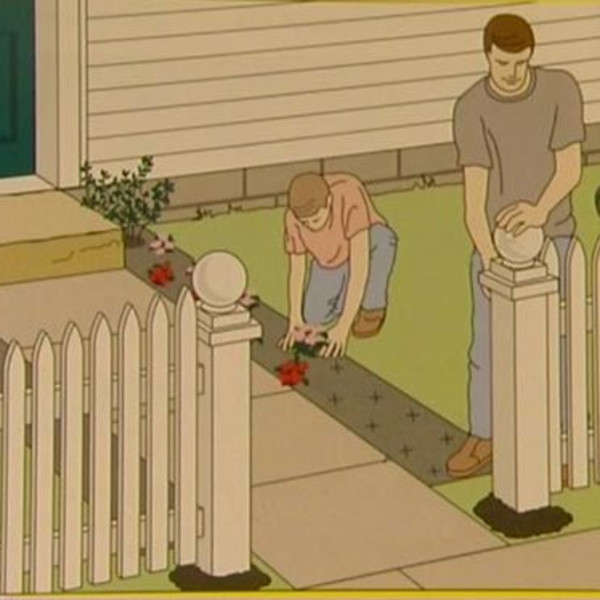
Michael Landy, 'Four Walls': Whitworth Art Gallery, Manchester
In 1977 Michael Landy's father, John Landy, a miner, was seriously injured in a tunnel collapse at the age of 37. Severe spinal injuries rendered him housebound and unable to return to work. In his poignant video Four Walls, Landy explores his father's previous enthusiasm for working around the home, referencing his collection of tools, DIY manuals, home improvement magazines and videos, assembled over decades, both before and after the accident. Reflecting on the struggles of his father's life, the video displays photographs and line drawings of optimistic young couples and growing families pursuing the modern dream of the improved house, set alongside the recurring difficulties of blocked guttering, eroded surfaces, decayed structures, skinned knuckles and clogged drains. The images are overlaid with a soundtrack of his father whistling his favourite songs.
Four Walls originally formed part of Semi-detached, the installation of a monumental and meticulously rendered sculptural replica of the front and rear facades of his parents' Essex home in the Duveen Galleries at Tate Britain in 2004. -
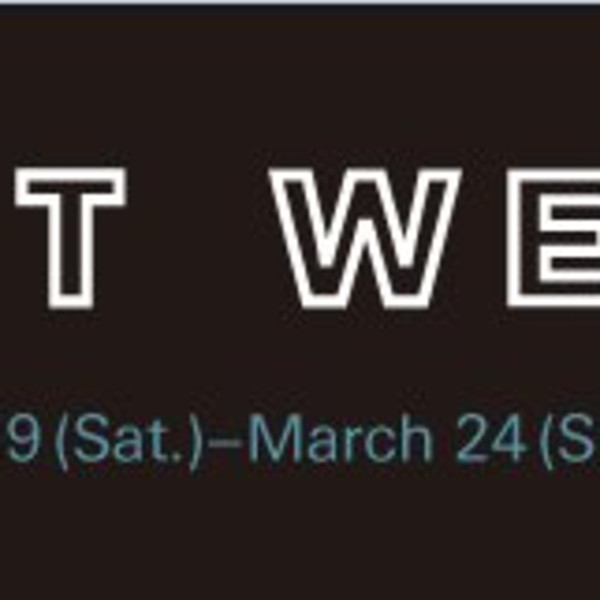
Steve McQueen, 'WHAT WE SEE': The National Museum of Art, Osaka
The National Museum of Art, Osaka presents a special exhibition entitled What We See, which will focus primarily on works that make use of the moving image.
In face of ongoing and unparalleled technological revolution that has occurred over the last century, the advent of globalization, and daily life in contemporary society, which is continually inundated with a huge quantity of information, we are exposed to a bewildering amount of change on a daily basis. In the course of ordinary life, the things that are presented as a "reality" sometimes seem to be occurring in a dream, making it seem as if we are experiencing a complete fabrication. At the same time, the realities that are presented as fiction are imbued with a greater intensity, and function no differently from reality, giving us the sense that the line between artifice and actuality is growing increasingly vague.
In the field of art, the concept of reality was nearly always linked to Realism. And by the time photography emerged, unlike painting, it was thought to have the ability to capture a genuine state of reality. It has since become clear, however, that photography does not always embody this function and that the reality it does embody is not necessarily factual. With the rise of the moving image, and the subsequent use of computer graphics and digital technology, scenes that do not actually exist came to be presented with a heightened sense of reality. For example, a film with the characteristics of a documentary that has been edited and molded according to a certain perspective produces a fiction that is detached from reality.
Today, there are many video works that reflect the state of contemporary society in which the distinction between fact and fiction has been lost. In these works, which blend fact and fiction, the artists are asking us to consider the current whereabouts of truth. Does truth exist in something that was created as a fiction? Is reality truth? When reality becomes a fiction, does truth begin to fluctuate? Or on the other hand, when fiction is formulated as reality, does it lead to the emergence of truth?
This exhibition will present a collection of video works by ten artists from around the world including two from Japan: Hiraki Sawa and Shino Yanai. In contemporary society, with its flood of information and images, we must search for the whereabouts of the essential truth contained in the realities and fictions that are presented in these expressions of the moving image.
Artists:Eija-Liisa Ahtila, Cyprien Gaillard, Johan Grimonprez, Chia-En Jao, Sojung Jun, Steve McQueen, Hiraki Sawa, Pei-Shih Tu, Clemens von Wedemeyer, Shino Yanai
-
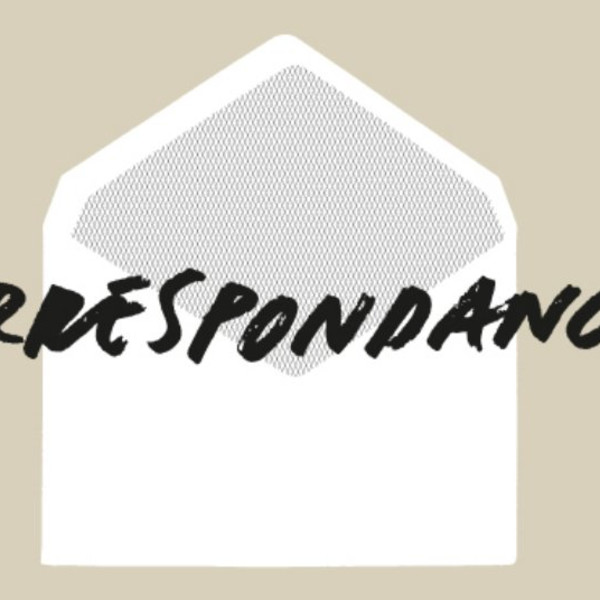
Walead Beshty, 'CORRESPONDANCES': Espace Culturel Louis Vuitton, Paris
The Espace culturel Louis Vuitton is pleased to announce the opening of its twentieth exhibition: Correspondences. The primary focus of the exhibition is Mail Art, and its aim is to bring together works by creators from different generations with different sensibilities who have all chosen to use the post as an artistic medium. Whereas from the 1950s to the 1970s this democratic "attitude" was part of a desire to circumvent the art market and distance oneself from institutions, artists from the generations that followed saw this media as a means to experiment with ways that would allow them to renegotiate both spatial and temporal references as they pertain to works of art that are frequently interactive in nature.
In this exhibition, several ramifications of Mail Art will be associated. The first is historical, and gives a major place to pioneering artist Ray Johnson whose work has rarely been shown in France. Johnson invented the New York Correspondence School and at the end of the 1950s began his body of work based on letters to which he asked friends to put finishing touches. Through this process, he gave a voice to artists such as Eleanor Antin, Alighiero Boetti and Jan Dibbets who took onboard this trend synonymous with a reproducible approach that was for the most part free-of-charge, thereby setting itself outside all traditional conventions.
However, it was not only the art market and the exhibition venues that were hard hit by Mail Art. This was also true with regards to the status of creator, destined here to be shared (as incarnated by the work of Vittorio Santoro) or even wiped out all together (as seen in that of artist Danh Võ) within the network of simple or complex correspondence established by senders who were in reality dependent on addressees. The art of correspondence is intimately connected to the idea of a network; a network comprised of artists, friends, or anonymous people whose members are brought together by a simple letter or package, the contents of which (occasionally veiled as in the case of Stephen Antonakos, or not) are often adapted to meet packaging constraints. Eugenio Dittborn and Walead Beshty displayed much inventiveness in this regard. The art of correspondence can also intersect with other activities, notably those of a professional nature, as demonstrated by Kurt Ryslavy, thereby allowing artists to bring art into daily life. The Espace culturel Louis Vuitton sought to give carte blanche to two artists: videographer Clarisse Hahn and sculptor Guillaume Leblon, each of whom respond in their own way to the myriad facets and possibilities of an art form that, no matter what supporters of the digital era may say, is as relevant and original as ever.
Regardless of the reasons for writing the letters that form this correspondence, and the repercussions they may have had, they invite us to travel through time and space where senders and recipients, works of art and spectator/ readers, are united at the heart of a common creative dynamic.
Curator: Erik Verhagen
Selected artists: Eleanor Antin, Stephen Antonakos, Walead Beshty, Alighiero Boetti, Jan Dibbets, Eugenio Dittborn, Clarisse Hahn, Ray Johnson, Guillaume Leblon, Kurt Ryslavy, Vittorio Santoro, Danh Võ
-
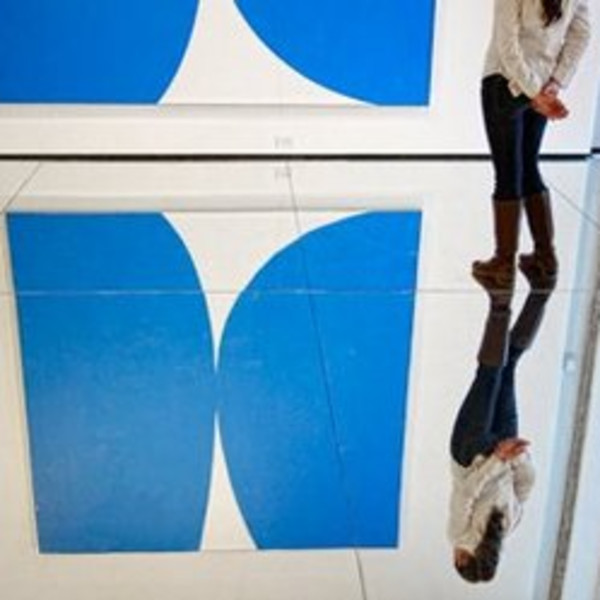
Walead Beshty, 'On the matter of abstraction (figs. A & B)': Rose Art Museum, Waltham, Massachusett
Artist Walead Beshty collaborated with Christopher Bedford, Henry and Lois Foster Director of the Rose, to create On the matter of abstraction (figs. A & B). Comprised of post-war non-figurative works drawn from the Rose's permanent collection, the exhibition takes the architecture of the museum's original building (Max Abramovitz, 1961), and uses it to structure two parallel narratives. The entry level, a terrazzo clad room with floor to ceiling windows, features works in the tradition of analytic abstraction by Ellsworth Kelly, Sol Lewitt, Robert Mangold, Kenneth Noland, Agnes Martin and Judy Chicago, among many others. Downstairs, the materially laden objects on display demonstrate a contrasting investment in the unruly. With works by Mark Bradford, Jessica Stockholder, Ana Mendieta, Helen Frankenthaler, Robert Rauschenberg and Charline von Heyl, among others, the lower level focuses not only on the gesture and body of the artist but also on the cultural detritus of the world at large. Beshty describes the visitor's descent to the lower floor as a movement from "the cathedral to the cave… both existing as traditional sites of ritual, contemplation and communion." here re-imagined as a passage from "line to stain."
Within the same space, Beshty created a separate work, a mirror and glass floor that runs throughout both levels of the building: Untitled (Rose Art Museum, Brandeis University: Waltham, Massachusetts, February 12 - June 9, 2013). According to Bedford, "While Beshty's floor is not part of the exhibition on the surrounding walls, it does function as a physical armature for the viewing experience, straddling-perhaps even collapsing-the dialectical concept that structures On the matter of abstraction's two parts. But while Beshty's floor may lack an image of its own, it absorbs the world around it through reflection, becoming by virtue of context a highly representational device. Over time and through use, the surface cracks as a result of visitors' movements, subsequently taking apart the images of the objects we see in it, until finally that reflected world is nothing more than a dense matrix of fractured images and jagged lines."
-
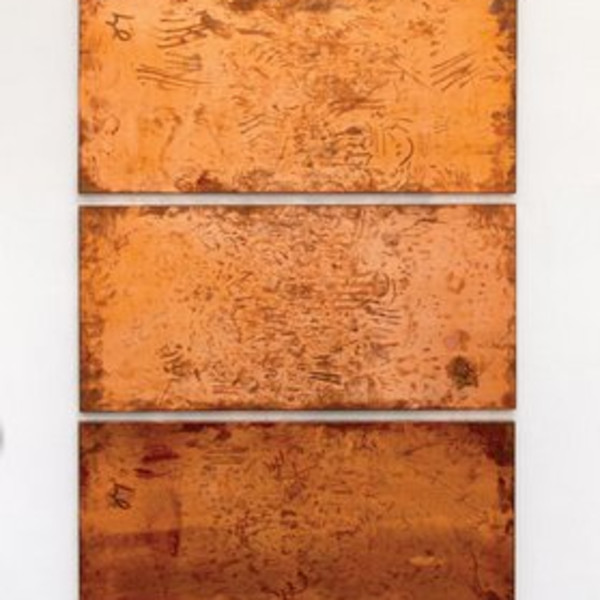
Walead Beshty, 'The Endless Renaissance – Six Solo Artist Projects': Bass Museum of Art, Miami Beach
The Bass Museum of Art continues to reinterpret its mission to inspire and educate by exploring the connections between our historical collections and contemporary art, with The Endless Renaissance: Six Solo Artist Projects. In diverse ways, the six artists invited to present solo projects reconsider objects and concepts from art history, showing how works and ideas transform over time and in front of different audiences. In video installations by Araya Rasdjarmrearnsook and Eija-Liisa Ahtila, traditional works of art are presented and reassessed by various audiences, engaging the works in their own terms. Barry X Ball's interpretations of notable sculptures and Hans-Peter Feldmann's manipulated paintings demonstrate contemporary examinations of art from the past. The works of Ged Quinn combine anachronistic references to art and literature to the strong traditions of landscape and still-life painting. Walead Beshty's diverse works also maintain an awareness of their own histories, providing viewers a clear record of their provenance.
Eija-Liisa Ahtila
Presenting her 2010 film installation The Annunciation, Eija-Liisa Ahtila (b. 1959 Hämeenlinna, Finland) usually works in various multimedia formats. Often presenting large-scale, multi-channel installations, Ahtila probes the inner workings of cinema and how it is used to perceive the world. For The Annunciation, Ahtila is exploring the Christian narrative from the Gospel of Luke, a scene which has been thoroughly depicted throughout art history. In the film, characters are played mainly by non-professional actors, and it is set in an artist's studio. The installation also includes several images of Annunciation paintings, showing Eija-Liisa's direct engagement of significant art historical works in a contemporary fashion.Barry X Ball
Directly engaging the historic tradition of the portrait bust, Barry X Ball (b. 1955, Pasadena, California) utilizes digital technologies and unconventional types of stone in creating his body of work. Taking digital scans of his models, which include prominent historical sculptures and contemporary art-world figures, he uses a computer to manipulate and ultimately carve the sculptures. The resulting works provide eerie portraits of their sitters, simultaneously recognizable and obfuscating. The translucent nature of many of the types of stone he chooses gives his works a glowing, ethereal quality - a celestial quality which sculptors have been intensely pursuing throughout art history.Walead Beshty
Exploring the very art world of which they are a part, the works of Walead Beshty (b. 1976, London, England) are diverse and often conceptually based. Keenly aware of their own histories, Beshty's FedEx boxes and copper sculptures offer a detailed record of their journey between various locations. The FedEx works are displayed with their packaging, but they also chronicle the cracks and scratches they receive during their shipment. Similarly, Beshty's copper panels are handled without gloves, allowing fingerprints and smudges to become part of each work's appearance. As the history of art is concerned very much over a work's provenance, or its record of ownership, Beshty's works offer the viewer tangible accounts of their own prior histories gives his works a glowing, ethereal quality - a celestial quality which sculptors have been intensely pursuing throughout art history.Hans-Peter Feldmann
Throughout his career, Hans-Peter Feldmann (b. 1941, Dusseldorf, Germany) has collected images and objects, exploring how we find meaning and value in various everyday items. His work also examines the way that art functions, including the way it has traditionally increased the social status of its owner or has been used as historical record. In challenging the way that art-world works, Feldmann doesn't sign his works, give them titles, or allow the use of labels. Using found images and paintings, he tweaks the objects ever so slightly, by adding a clown nose or crossed eyes, for example. In the end, these manipulations are just enough to subvert the original object's meaning. Feldmann's use of humor also allows him to question the viewer's expectations of art throughout his work.Hans-Peter Feldmann's presentation was curated by Helena Tatay.
Ged Quinn
In his paintings, Ged Quinn, (b. 1963, Liverpool, England) places elements from literature, history and mythology within pastoral landscapes. Reassessing such landscapes with specific references and allusions to history, literature and mythology, Quinn probes the psychological depths of Romanticism and other schools of painting. Each painting operates on multiple levels, consisting of fragments of information. Disregarding typical linear narratives, Quinn's works result in complex systems of information that invite endless interpretations. Exposing themes such as mortality, melancholia and transcendence, Quinn's intensely philosophical and methodical paintings reflect his interest in how ideas travel throughout history.Araya Rasdjarmrearnsook
Araya Rasdjarmrearnsook (b. 1959, Trad, Thailand) explores the connections between the legacy of Western art and various Eastern cultures. In her works for this exhibition, she engages masterworks from prominent European artists that are well-known to Western audiences. She presents these works to rural Thai villagers and farmers who are likely unfamiliar with the legacies of each work. In doing so, she explores the connections that are created when two diverse realms are instantly intersected. As the Thai audiences approach these works with humor, concern, confusion and delight, several commonalities arise between two seemingly disparate cultures.The Endless Renaissance - Six Solo Artist Projects: Eija-Liisa Ahtila, Barry X Ball, Walead Beshty, Hans-Peter Feldmann, Ged Quinn and Araya Rasdjarmrearnsook will be on view during Art Basel Miami Beach 2012 with a VIP reception on December 5, 2012 9pm-12am. Special museum hours will be: Thursday, December 6 through Monday, December 10, 2012, 10 a.m. to 6 p.m. and regular museum hours thereafter. The exhibition runs through March 17, 2013.
-
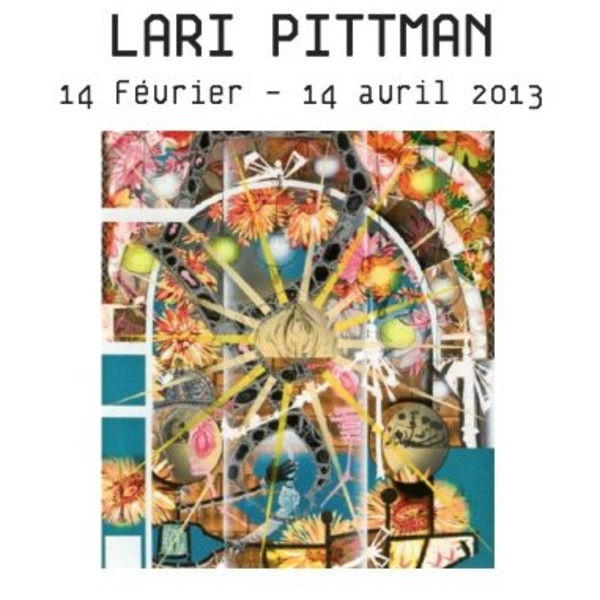
Lari Pittman: Le Consortium
-
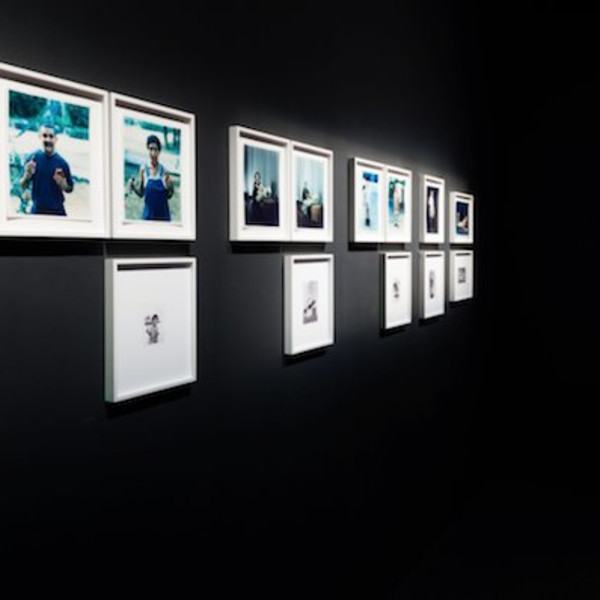
Akram Zaatari: The Liverpool Biennale
Akram Zaatari presents his first major UK solo presentation at FACT on the occasion of the Liverpool Biennial. The work within the exhibition considers private and public interactions with the human body and the technological apparatus. Zaatari's show takes us from the intimacy of a photographer's studio in Egypt to an inspiring 4-channel media installation consisting of private videos of Arab youth, found on YouTube. The artist considers the thin line that connects us to the public - exploring various techniques - studying the relationship between a photographer and his muse, as well as the solitary relationship between Arab male youth and social media.
All works are UK Premieres.
The Works
Her + Him (2012) consists of a single channel-film, Her + Him Van Leo (1998-2012) and a vitrine of photographs taken by legendary Armenian photographer Van Leo in 1959. The vitrine shows an Egyptian woman called Nadia undressing in twelve different positions who is also the subject of the film. This expanded documentary is a dialogue between photography and video.
Another Resolution (1998) presents a series of images of children taken at different photographic studios in different poses. Zaatari noticed that these children often possessed seductive attitudes, and so decided to invite grown ups to embody the same poses as the children - reflecting the adult attitude suggested by the different poses taken by the original photographer. This work serves as a comment on the photographer's power to affect the social codes expected of both children and adults in photographic practice.
Bodybuilders (2011)
Bodybuilders is a series of photographs taken in the Southern Lebanese port city of Sidon (Saida). The images are reproduced from damaged negatives taken by Hashem al Madani in 1948. The eroded images create a poetic juxtaposition in contrast with the strapping youth of the bodybuilders depicted within them.
Dance to the End of Love (2011) is a four-screen media installation consisting of found YouTube footage of Arab youth who have decided to film themselves and share these rushes freely online. Zaatari notes that all of these films were produced on the eve of what is today referred to as the 'Arab Uprising', and as such, considers the role of YouTube as a space that is both intimate and public.
Dance to the End of Love was made out of low resolution footage made mainly with mobile phones in Egypt, Yemen, Libya, Saudi-Arabia and Oman, and showing male bodybuilders, men driving cars and riding motorcycles, singing and dancing, but when included within this 4-channel-video, this unique piece becomes a symphony in 5 movements about the loneliness of the oppressed, about hundreds of thousands crushed and forgotten in their home countries, who choose to use their computer screens as sites to live out their collective, heroic dreams.
Akram Zaatari, b. 1966, Saida, is an artist who lives and works in Beirut, Lebanon. Recent exhibitions include Photography: New Documentary Forms (Tate Modern, London, U.K., 2012), Composition for Two Wings(Contemporary Art Centre Vilnius, Lithuania, 2012), and Seeing is Believing (Kunst-Werke Berlin, Germany, 2011). -
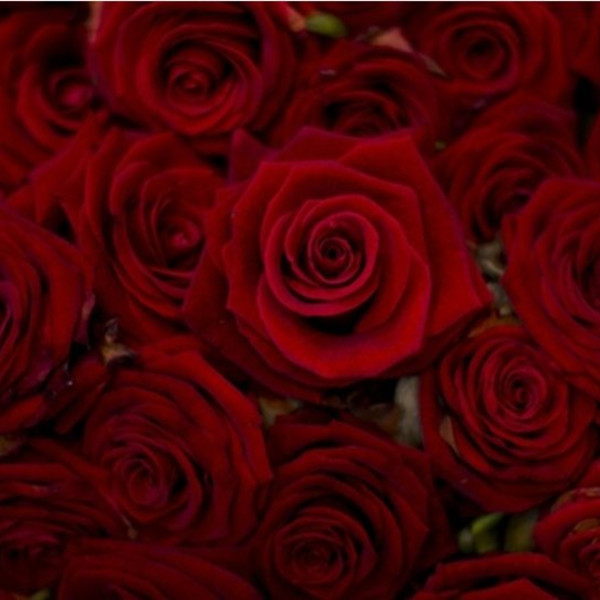
Anya Gallaccio: Red on Green at Jupiter Artland
10,000 fragrant and velvety red roses are packed onto the gallery floor, where over the summer months they are left to blacken and die. Initially glowing and vibrant, the petals will darken and add the evocation of death and decay to themes of celebration and love. This sensual bed of rose heads atop green leaves and thorny stems suggests extravagance and romance; yet, over time, may become cliché, obsessive, and even dangerous.
-
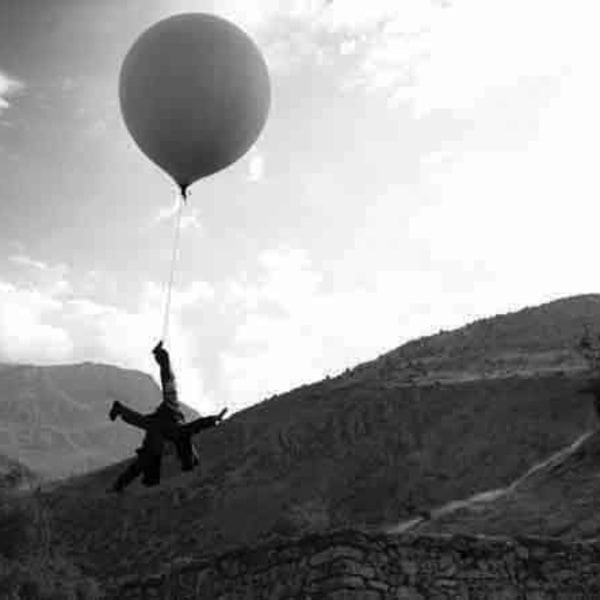
Kutlug Ataman: Mesopotamian Dramaturgies at Sperone Westwater
New York, NY: Sperone Westwater is pleased to announce its representation of artist Kutlug Ataman and his first solo exhibition at the gallery. Ataman returns to New York after eight years of working intensively in Europe and the Middle East. In much of his recent work, he casts his gaze on the history and modernization of Turkey, his native country. Kutlug Ataman: Mesopotamian Dramaturgies, on view 1 November through 22 December 2012, will include four important video installations from the artist's latest series.
Mesopotamian Dramaturgies (2009-2011) revisits the recent history of Mesopotamia -- the "cradle of civilizations" that has witnessed the birth of many cultures and nations -- to focus on the tension between tradition and modernization. Ataman's interest in the representation of the individual or the collective through narrative widens to the concepts of history and geography, and to the way a nation forms and stages its own narrative. In speaking about the series, Ataman says:I remain very interested in our constructs; how we construct our narratives, but I have moved from people to community -- how groups of people create their own common mythology, how we construct our knowledge of history and geography, how we rewrite each other's stories and how these stories are imposed in cultures.
Mayhem (2011) is about the destruction of old structures in order to create new ones, and was made at the dawning of the Arab spring. Ataman uses water as his main subject not only for its cleansing symbolism, but also for its destructive force. Mayhem is a multi-screen video sculpture that can be viewed from both outside and from within.
Journey to the Moon (2009) depicts the activities of inhabitants of a remote village in eastern Anatolia who reportedly set off for the moon on board a minaret transformed into a spaceship. This entirely fictional story is set in 1957, around the time of the Cold War space race. Using a sequence of black and white still shots, 'fabricated evidence', and a scripted voiceover, this footage is juxtaposed with interviews by contemporary Turkish scholars who comment on the topics addressed in the story. Ambiguously suspended between reality and artifice, Journey to the Moon alternates these two narrative levels in a structure similar to that of investigative television reports, where the opinions of experts lend depth to the documentary materials.
In English as a second language (2009), Ataman projects a film of two Turkish schoolboys reciting "nonsensical" English poems by Edward Lear, hampered by the difficulty of a newly-acquired language and the absurdity of the text they are reading. This work is complemented by The complete works of William Shakespeare (2009), in which the entire folio of works by Shakespeare, painstakingly hand-transcribed by the artist, are projected as a scrolling image, alluding to the notion of the book as a source of enlightenment. Both works refer to the complexities of a country finding its place in a globalized world in which English is the lingua franca.
Born in 1961 in Istanbul, Ataman lives and works in London, Islamabad and Istanbul. He is the recipient of the 2004 Carnegie Prize, awarded for the workKüba (2004), originally commissioned by ArtAngel, London and exhibited at the 54th Carnegie International; Museum of Contemporary Art, Sydney; and Thyssen-Bornemisza Art Contemporary, Vienna. Recent solo exhibitions include The National Museum of 21st Century Arts, Rome (2010), a mid-career retrospective at Istanbul Modern (2010-2011), and ARTER, Istanbul (2011). Ataman's works have been shown at many international exhibitions including the Istanbul Biennial (1997, 2003, 2007, 2011), the Venice Biennale (1999), the Berlin Biennale (2001), the Sao Paulo Bienal (2002, 2010), and Documenta 11 (2002), as well as the Tate Triennial (2003).
For more information and images, please contact Maryse Brand at +1 212 999 7337 or maryse@speronewestwater.com. -
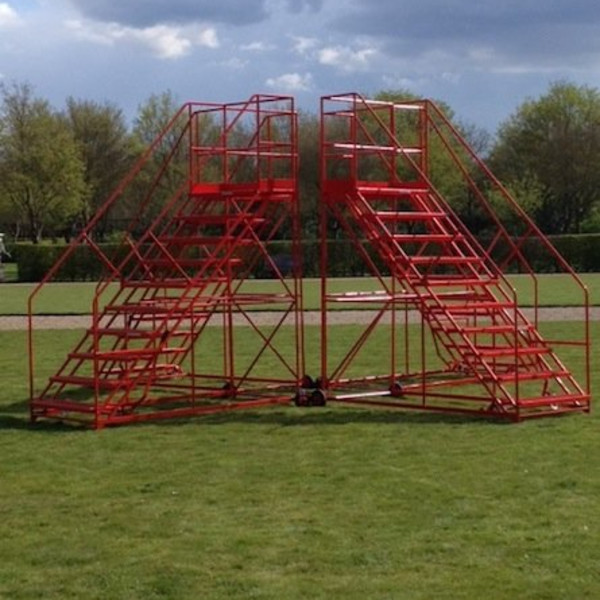
Alexandre de Cunha, 'Garden of Reason': Ham House
Garden of Reason was an exciting season of contemporary art held at Ham House and Garden over the Summer of 2012.
The 17th-century garden at Ham served as inspiration and setting for eight major commissions, ranging from sculpture to film, sound pieces and performance, as well as a series live art events. The exhibition was further animated by a series of talks and tours.
The project also offered the chance for Ham House and Garden to get involved with its local community, and the interaction programme worked with local groups to produce fantastic new interpretations of the garden and even organise a unique evening event in August.
Page
71
of 72
